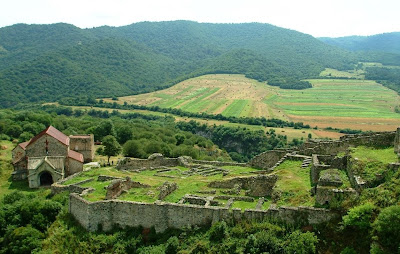DMANISI
The town of Dmanisi is first mentioned in the 9th century as a possession of the Arab emirate of Tbilisi, though the area had been settled since the Early Bronze Age. An Orthodox Christian cathedral – “Dmansis Sioni” – was built there in the 6th century. Located on the confluence of trading routes and cultural influences, Dmanisi was of particular importance, growing into a major commercial center of medieval Georgia. The town was conquered by the Seljuk Turks in the 1080s, but was later liberated by the Georgian kingsDavid the Builder and Demetrios I between 1123 and 1125. The Turco-Mongol armies under Timur laid waste to the town in the 14th century. Sacked again by the Turkomans in 1486, Dmanisi never recovered and declined to a scarcely inhabited village by the 18th century.
Extensive archaeological studies began in the area in 1936 and continued in the 1960s. Beyond a rich collection of ancient and medieval artifacts and the ruins of various buildings and structures, unique remains of prehistoric animals and humans have been unearthed. Some of the animal bones were identified by the Georgian paleontologist A. Vekua with the teeth of the extinct rhino Dicerorhinus etruscus etruscus in 1983. This species dates back presumably to the early Pleistoceneepoch.
The discovery of primitive stone tools in 1984 led to increasing interest to the archaeological site. In 1991, a team of Georgian scholars was joined by the German archaeologists from Römisch-Germanisches Zentralmuseum, and later the U.S.,French and Spanish researchers.





.jpg)




No comments:
Post a Comment